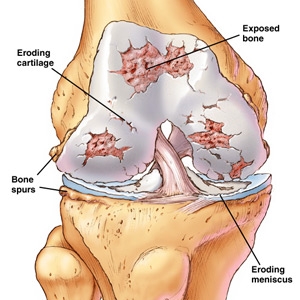Septic Arthritis is a painful infection in a joint severe pain in the affected joint, especially with movement. It refers to the production of pus, without necessarily implying sepsis. Infectious arthritis is a form of arthritis caused by an infection in the joint. It is also called Suppurative arthritis. The infection can come from germs that travel through your bloodstream from another part of your body. Septic arthritis can also occur when a stabbing injury delivers germs directly into the joint, an infection in another part of the body usually the intestines, inflammatory response in the joints. Septic arthritis usually comes on rapidly with intense pain, joint swelling, and fever.
Septic Arthritis Symptoms and Causes:
Septic arthritis can be caused by bacterial, viral or fungal infections. Bacterial infection with Staphylococcus aureus (staph) is the most common cause. Staff commonly lives on the even healthy skin. Septic arthritis can develop when an infection, such as a skin infection or urinary tract infection, spreads through your bloodstream to a joint. Less commonly, a puncture wound, drug injection, or surgery in or near a joint can give the germs entry into the joint space. The lining of your joints (synovium) has little ability to protect itself from infection. Your body’s reaction to the infection including inflammation that can increase pressure and reduce blood flow within the joint contributes to the damage.
Symptoms:
Severe pain that worsens with movement
Swelling of the joint
Warmth and redness around the joint
Chills
Weakness
Decreased appetite
Rapid heart rate
Irritability
Conclusion:
An arthrocentesis is a test frequently used to diagnose this condition. It involves inserting a needle into the affected joint to take a sample of synovial fluid. The sample is sent to the lab to be examined for color, consistency and the presence of white blood cells and bacteria.
From this test, one can diagnosis whether a person has an infection in the joint and can also find the cause of infection.

